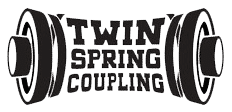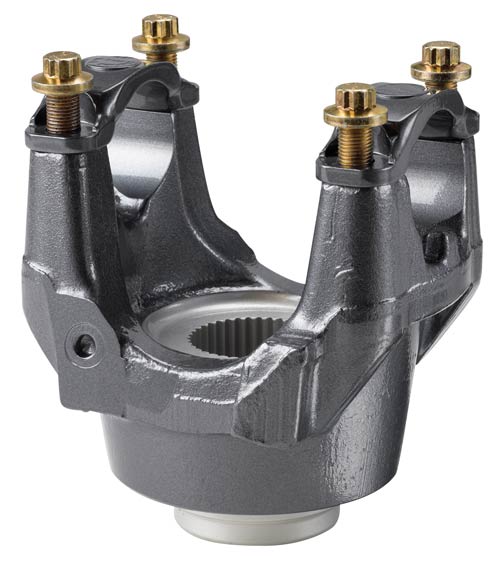The Ultimate Guide to Spicer Yokes Everything You Need to Know
Table of Contents
Spicer yokes are an essential component in many industrial and automotive applications, playing a crucial role in power transmission and driveline systems. Whether you’re a mechanic, engineer, or simply someone interested in understanding the inner workings of these vital components, this comprehensive guide will provide you with all the information you need.
What are Spicer Yokes?
Spicer yokes, also known as universal joint yokes or U-joint yokes, are the forked ends of a universal joint that connect the joint to the driveline components. They are responsible for transmitting rotational power from one shaft to another, while allowing for angular misalignment between the two shafts. [1][2]
The Spicer yoke is named after the American engineer and inventor Clarence Spicer, who patented the universal joint design in 1904. Spicer’s innovative design revolutionized the way power was transmitted in vehicles, enabling smoother and more efficient driveline operation. [3]
Types of Spicer Yokes
There are several different types of Spicer yokes, each designed to meet specific application requirements. The most common types include:
Flange Yokes
Flange yokes are the most widely used type of Spicer yoke. They feature a flat, circular flange that is bolted directly to the driveline component, such as a differential or transmission. Flange yokes are known for their strength, durability, and ease of installation. [4]
Stub Shaft Yokes
Stub shaft yokes are designed to be welded or pressed onto the end of a driveline shaft. They are commonly used in heavy-duty applications, such as in commercial vehicles or off-road equipment, where a more robust connection is required. [5]
Companion Flange Yokes
Companion flange yokes are similar to flange yokes, but they feature a larger diameter flange that is designed to mate with a corresponding companion flange on the driveline component. This type of yoke is often used in applications where a more secure and stable connection is needed.
Slip Yokes
Slip yokes are used in driveline systems that require the ability to accommodate changes in shaft length, such as when the suspension of a vehicle compresses or extends. These yokes feature a sliding sleeve that allows the shaft length to adjust as needed.
Key Components of Spicer Yokes
Spicer yokes are composed of several critical components that work together to ensure smooth and reliable power transmission. These components include:
**Yoke Ears**: The forked ends of the yoke that connect to the universal joint.
**Yoke Shaft**: The cylindrical portion of the yoke that connects to the driveline shaft.
**Yoke Flange**: The flat, circular surface that is used to mount the yoke to the driveline component.
**Bearing Cups**: The recessed areas in the yoke ears that house the universal joint bearings.
**Bearing Retainers**: The components that hold the universal joint bearings in place within the yoke ears.
Spicer Yoke Applications
Spicer yokes are used in a wide range of applications, including:
- **Automotive**: Spicer yokes are a critical component in the driveline systems of cars, trucks, and SUVs, connecting the transmission or differential to the drive axles.
- **Commercial Vehicles**: Heavy-duty Spicer yokes are used in commercial vehicles, such as buses, tractor-trailers, and construction equipment, to transmit power from the engine to the wheels.
- **Off-Road Vehicles**: Spicer yokes are essential in off-road vehicles, such as ATVs, UTVs, and military vehicles, where they must withstand high levels of stress and vibration.
- **Industrial Equipment**: Spicer yokes are used in a variety of industrial applications, including mining equipment, agricultural machinery, and material handling systems.
Spicer Yoke Maintenance and Inspection
Proper maintenance and inspection of Spicer yokes are crucial to ensuring the longevity and reliability of your driveline system. Here are some key maintenance and inspection tips:
- **Lubrication**: Spicer yokes require regular lubrication to reduce friction and wear. Check the manufacturer’s recommendations for the appropriate type and frequency of lubrication.
- **Inspection**: Regularly inspect Spicer yokes for signs of wear, such as cracks, deformation, or excessive play in the universal joint bearings. Replace any damaged or worn components immediately.
- **Alignment**: Ensure that the Spicer yokes are properly aligned with the driveline components to prevent premature wear and vibration.
- **Torque Specifications**: Tighten all Spicer yoke fasteners to the manufacturer’s recommended torque specifications to prevent loosening and potential failure.
Spicer Yoke Replacement
If a Spicer yoke needs to be replaced, it’s important to follow the proper procedures to ensure a safe and effective installation. Here are the general steps:
- **Disconnect the Driveline**: Safely disconnect the driveline from the vehicle or equipment, taking care to support the weight of the components.
- **Remove the Old Yoke**: Carefully remove the old Spicer yoke, taking note of any shims or spacers that may be present.
- **Install the New Yoke**: Align the new Spicer yoke with the driveline component and secure it in place according to the manufacturer’s instructions.
- **Reassemble the Driveline**: Reconnect the driveline, ensuring that all components are properly aligned and tightened to the correct torque specifications.
- **Perform a Test Run**: After the installation, perform a test run to ensure that the driveline is operating smoothly and without any vibrations or unusual noises.
Spicer Yoke Troubleshooting
If you encounter issues with your Spicer yokes, here are some common problems and their potential causes:
- **Excessive Vibration**: This could be caused by misalignment, worn universal joint bearings, or a damaged yoke.
- **Premature Wear**: Improper lubrication, excessive load, or misalignment can all contribute to premature wear of Spicer yokes.
- **Driveline Noise**: Worn universal joint bearings, loose fasteners, or a damaged yoke can result in noises coming from the driveline.
- **Driveline Binding**: Misalignment, a bent yoke, or a seized universal joint can cause the driveline to bind or seize up.
If you encounter any of these issues, it’s important to diagnose and address the problem promptly to prevent further damage to the driveline system.
Conclusion
Spicer yokes are a critical component in a wide range of industrial and automotive applications, playing a vital role in the transmission of power and the smooth operation of driveline systems. By understanding the different types of Spicer yokes, their key components, and the proper maintenance and troubleshooting procedures, you can ensure the longevity and reliability of your driveline system. Whether you’re a mechanic, engineer, or simply someone interested in the inner workings of these essential components, this guide has provided you with the information you need to make informed decisions and keep your equipment running at its best.
https://www.dana.com/commercial-vehicle/products/driveline/universal-joints/slip-yokes/

